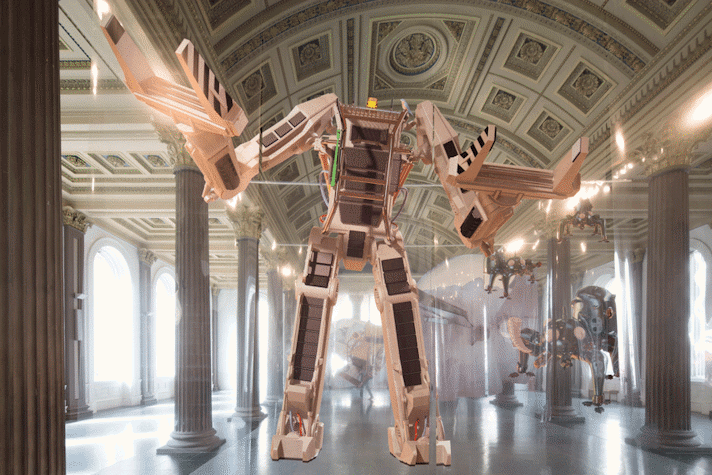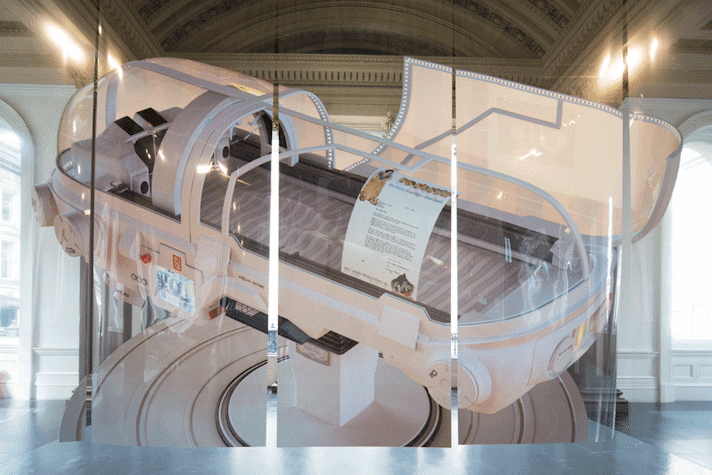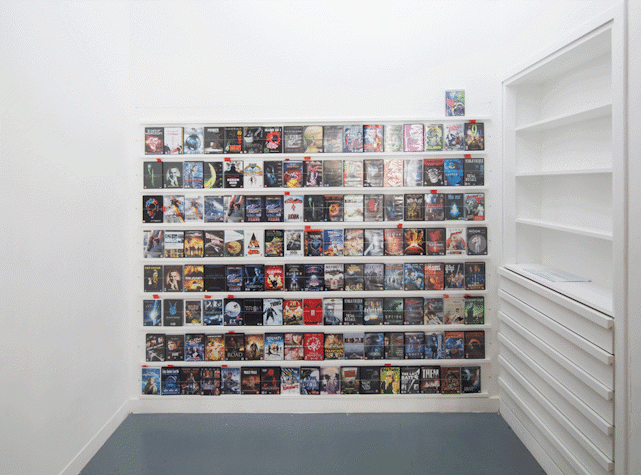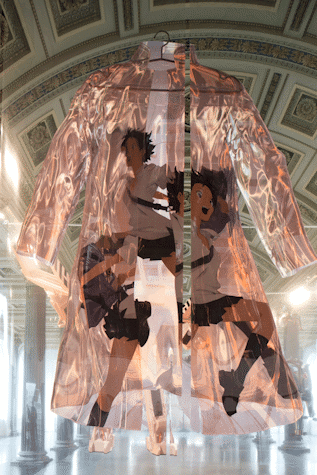Gallery of Modern Art
Aleksandra Domanović looks at the history and development of technology through a gender-conscious lens. Her work specifically focuses on the point at which the machine meets, interfaces and touches the human user.
In her first institutional solo exhibition in Scotland, Domanović focuses on the marginalised representation of women in popular science fiction. Using the building’s position and architectural features, Domanović has re-contextualised the gallery by installing large sculptural prints on transparent foil. Films such as Blade Runner(1982), Demon Seed (1977), Alien (1979), Prometheus (2012) and Gravity (2013) form the source material for prints of objects that interact or contribute to an important part of the female characters’ narrative. These films deviate from the conventional representation of women in cinema, where they are typically shown as mother, love interest or victim.
The material used is similar to the celluloid sheets historically used by animation houses to draw and layer cartoon animations. Domanović discovered that the mechanical filling-in of the cartoon outlines was women’s work – the actual art-working was reserved only for men. This repetitive activity echoes the labour undertaken in this building 135 years ago, when the Gallery of Modern Art was a telephone exchange staffed entirely by women, who were referred to as ‘computers’.
Aleksandra Domanović’s exhibition is a multi-referential exploration of the role of women in technology, both past, present, and in the fictive future.
Alongside the exhibition, Domanović has created a DVD library of films relating to the issues examined in the exhibition.
Commissioned by Glasgow International and supported by The Henry Moore Foundation.





